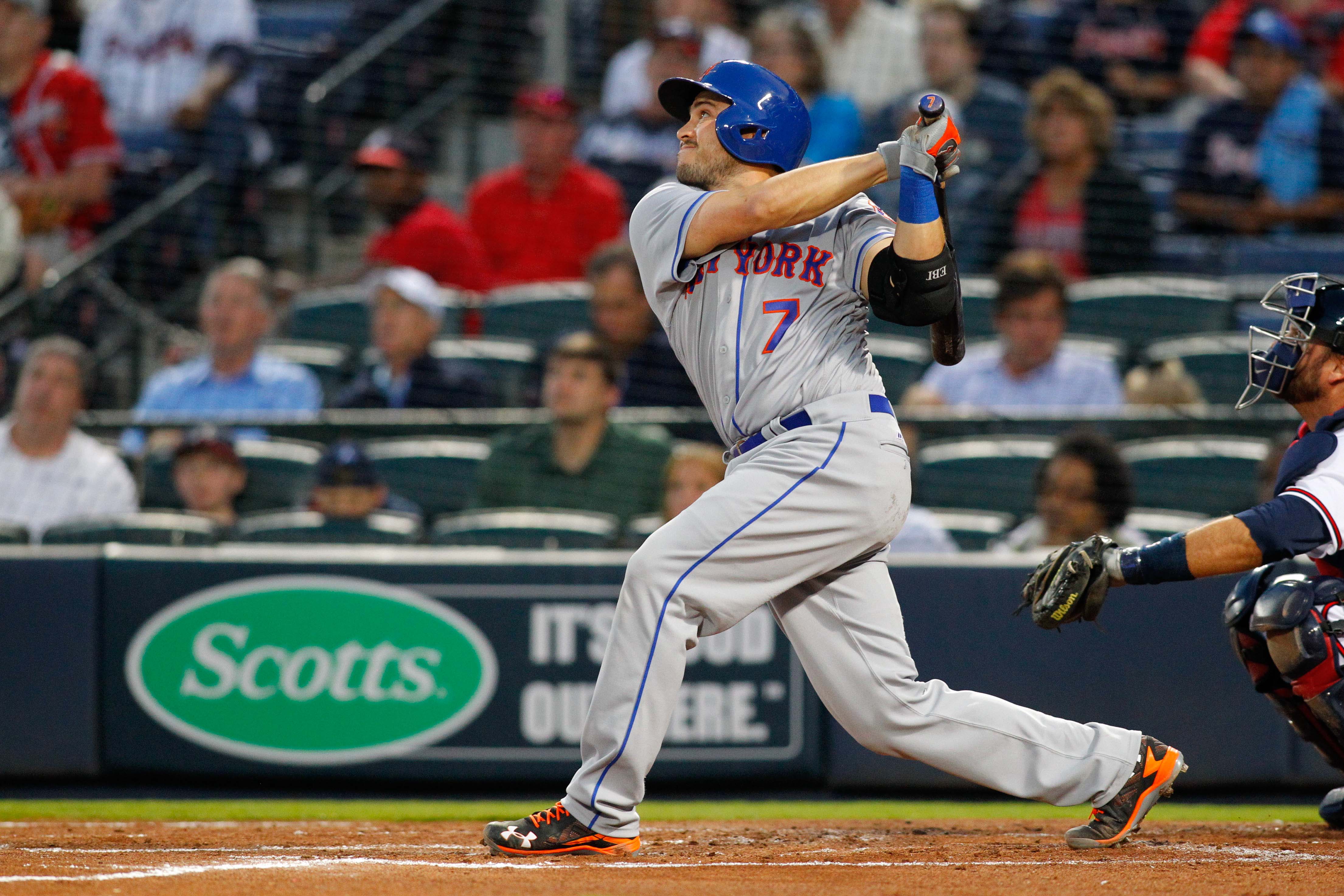When the Mets formally announced they had traded away R.A. Dickey (recipient of the 2012 National League Cy Young Award) to the Toronto Blue Jays for Noah Syndergaard (who they hope will be the recipient of multiple NL Cy Young Awards down the line) the team mentioned neither man first. The first player called out in this deal was a hotshot catching prospect coming to the Mets named Travis d’Arnaud.
It’s hard to remember now—four whole years ago!—but d’Arnaud was an elite prospect and the kind of player you’d acquire in any kind of deal that might involve a recently named Cy Young winner. In 2012, Kevin Goldstein named him 16th on BP’s Top 101 before the season, ahead of Francisco Lindor, Nolan Arenado, Matt Harvey, Carlos Martinez, Sonny Gray, Jose Fernandez, and Syndergaard himself, who just made the cut at No. 93. A year later, Jason Parks had him a tick higher at No. 15. (Syndergaard jumped to No. 28, a reflection of the development he showed during that final year in Toronto’s system, when he struck out 122 in 103 innings in full-season minor-league ball.)
Point is, Travis d’Arnaud was supposed to be really good! Everyone thought so! He even headlined the deal that could end up defining the Mets for the next decade, but d’Arnaud sure hasn’t panned out the way Mets fans could’ve hoped.
Yes, d’Arnaud handles this (mostly) young pitching staff with aplomb and competence. He’s, by all outward appearances, a likeable clubhouse presence, but health problems have persisted with him throughout his entire professional career. The list of ailments is long and familiar to any Mets fan. A Grantland headline from last September summed up his four MLB seasons perfectly: “Travis d’Arnaud Looks Great, But Can He Stay on the Field?”
And this season has been nothing short of a disaster thus far for d’Arnaud. He’s sporting a .205 TAv, more than 100 points below last season’s mark. He has a total of three extra-base hits just about 50 plate appearances into the year. His bWAR is sub-replacement level. His framing numbers are worse than last year and noticeably below that of his backup, Kevin Plawecki. While the rest of the Mets seem to be finding their bats, d’Arnaud has been left behind in the doldrums.
Insofar as any catcher can be deemed healthy, d’Arnaud doesn’t seem to be hurting too much from a physical aspect. (An elbow contusion during the weekend set in Cleveland did knock him to the bench for a day, but he seems to have rebounded.) If his woes persist for another month or six weeks, without any obvious injury with which to place blame, I might start to get seriously worried about d’Arnaud’s place in the lineup, but aside from remaining the best option Terry Collins has at backstop, I still think he’ll turn around his season before the whispers rise above inside voice levels.
His strikeout rate hasn’t risen so dramatically (from 18.3 to 20.4 percent) that you can call d’Arnaud lost at the plate, and his walk rate has actually seen an uptick thus far over 2015 (8.6 to 10.2 percent). When d’Arnaud does make contact (.242 BABIP), the ball just isn’t finding grass the way it did last season (.289) or in his first full season of 2014 (.259).
Weirdly enough, d’Arnaud is only swinging at pitches outside the strike zone 18.1 percent of the time (down from 28.1 percent last season) and his contact rate on those outside pitches has gone up from 62.9 to 82.4 percent. Pitches in the zone? Those rates are still in line with his career levels. In other words, there’s still a lot of early-season noise in these numbers that needs to stabilize over the next few weeks, but there is every reason to think d’Arnaud’s plate discipline will help him swing at fewer bad pitches out of the zone and better pitches that are in the zone. Then, before too long, they’ll start to drop where the fielders ain’t standing before too long.
The implication of that Grantland headline was on the mark: If Travis d’Arnaud can stay on the field, he can look like an All-Star catcher with 15-homer power and the savvy to handle an elite pitching staff. We saw glimpses of that d’Arnaud during the Mets’ World Series run last year (12 homers and .312 TAv in just 67 games).
So long as d’Arnaud stays upright and mobile, that player should be back sooner than later.
Photo Credit: Brett Davis-USA TODAY Sports

Wow – bad timing on this article…